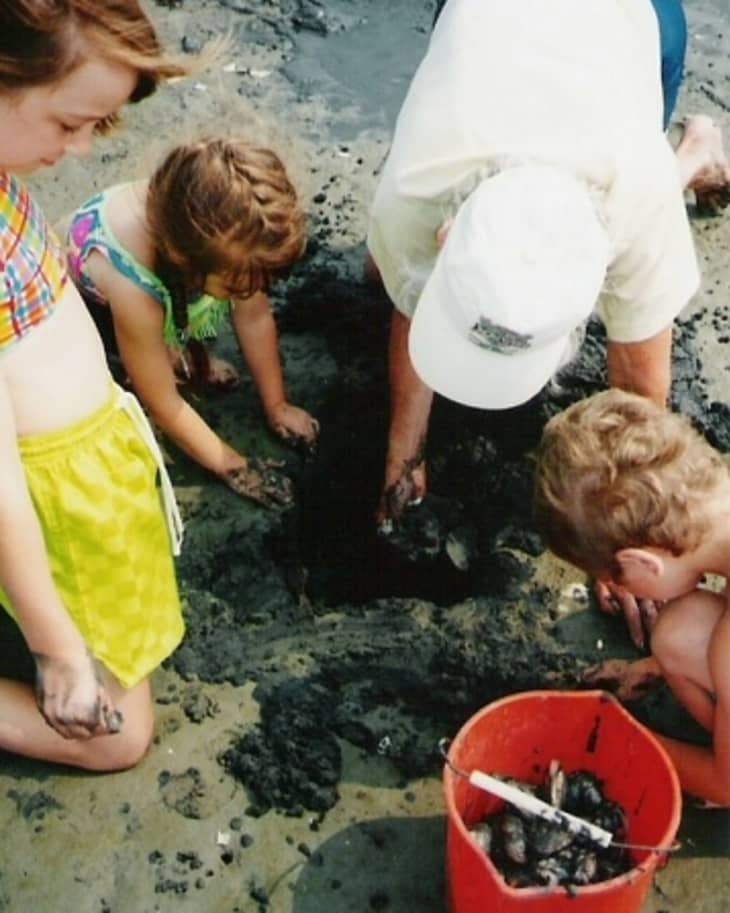Sustainable Seafood: How Clams Are Farmed
We’ve been talking about clams a lot recently, so we thought we’d take a look at how these mollusks are farmed and what makes them a good seafood choice!
Most clam farmers purchase their clams as young spats (baby clams that haven’t grown a shell) from hatcheries when they’re about a centimeter long. These spats are seeded in the ocean floor and then covered with a net to protect the clams from predators like crabs. The net has to be replaced every so often when it becomes too clogged with algae.
Since they are stationary, clams require a steady flow of water in order to feed. The strong tides in coastal bays and estuaries are perfect. Many farmers, like Les Hemmila of Barnstable Seafarms who we met at the New England Aquarium dinner, lease their clam and oyster beds from the nearby cities.
Clams feed by filtering particles and nutrients from the water that flows over them, which actually has a positive impact on the water quality around the clam beds. Unlike many other types of farmed seafood, clams don’t require antibiotics or an additional supply of food. Environmental concerns like red tide are monitored by the state governments, and farmers must follow strict protocols when an environmental alert has been issued.
If possible, check how the clams you want to buy were harvested. Small farming operations actually harvest their clams entirely by hand using trowels and rakes. This is done at low tide and has zero impact on the ocean environment. Some operations raise their clams in cages or bags set in the ocean floor, which are simply lifted out of the water and cause minimal impact to the environment.
Larger operations will use hand-held dredges, which results in some disturbance to the seafloor. However this disturbance is relatively short-lived and not nearly damaging as the large hydraulic dredges used by industrial fisheries.
• Our thanks to Les Hemmila of Barnstable Seafarms for answering all our questions about his operation and giving us special insight on the clam farming industry!
• For additional information on clams and clam farming, check out the Ocean Friendly Seafood Guide from the New England Aquarium and the Seafood Watch page at the Monterey Bay Aquarium.
Related: How to Clean the Sand out of Clams
(Image: Flickr member jaye_elle licensed under Creative Commons)
